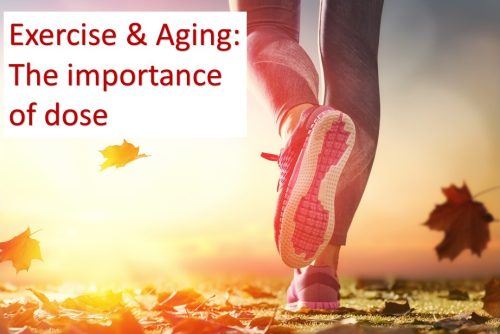We all know that exercise is good for our health, both for animals and humans. When it comes to aging cells, studies show that exercise can make a positive difference. However, understanding this relationship is a bit more complex.
In animal studies, activities like wheel running, aerobic treadmill exercise, and swimming have been linked to reducing aging cells in organs like the heart, liver, muscles, kidneys, and fat tissues. For example, in mice, just three weeks of wheel running lowered aging markers in the heart (1). A six-week daily treadmill exercise decreased aging-related markers in the kidneys of aged mice (2). Swimming for three months also had positive effects on the liver of aging rodents (3).
But here’s the catch – the type and intensity of exercise matter. In some cases, exercise-induced aging of certain cells can be good, like in muscle cell regeneration after exercise. However, too much, especially at extremely high intensity, can be harmful. For instance, intense swimming that exhausts rats can lead to aging in the hippocampus, affecting memory (4). This shows that the relationship between exercise and aging is not a simple one.
In humans, studies suggest that regular physical activity is linked to lower levels of aging markers in certain cells. Regular exercise, even as little as four hours per month, has been associated with reduced levels of these markers in immune cells (5). A five-month training program also showed positive effects on aging cells in the thigh fat tissues of older overweight women (6). In another study, leukocyte infiltration of skeletal muscles increased during resistance training in healthy and active young men, which may have induced the clearance of senescent cells (7).Interestingly, diet plays a role too – a high-protein diet was linked to better clearance of aging cells during resistance training (7).
So, what’s the bottom line? Exercise does seem to help in reducing aging cells, but it’s not a one-size-fits-all scenario. The type of exercise, its intensity, and even your overall health play a role. It’s like a Goldilocks situation – not too little, not too much, but just right. And don’t forget, a balanced diet also plays its part in keeping those cells in check.
In the end, it’s clear that staying active has its benefits, but finding the right balance is key to aging gracefully.
Reference
- Werner C, Hanhoun M, Widmann T, Kazakov A, Semenov A, Poss J, et al. Effects of hysical exercise on myocardial telomere-regulating proteins, survival pathways, and apoptosis. J Am Coll Cardiol 2008;52(6):470–82.
- Bao C, Yang Z, Li Q, Cai Q, Li H, Shu B. Aerobic endurance exercise ameliorates renal 301 vascular sclerosis in aged mice by regulating PI3K/AKT/mTOR signaling pathway. DNA 302 Cell Biol 2020;39(2):310–20.
- Huang CC, Chiang WD, Huang WC, Huang CY, Hsu MC, Lin WT. Hepatoprotective effects 304 of swimming exercise against D-galactose-induced senescence rat model. Evid Based 305 Complement Alternat Med 2013;2013:275431.
- Liu B, Liu W, Liu P, Liu X, Song X, Hayashi T, et al. Silibinin alleviates the learning and 310 memory defects in overtrained rats accompanying reduced neuronal apoptosis and 311 senescence. Neurochem Res 2019;44(8):1818–29.
- Liu Y, Sanoff HK, Cho H, Burd CE, Torrice C, Ibrahim JG, et al. Expression of p16(INK4a) in 314 peripheral blood T-cells is a biomarker of human aging. Aging Cell 2009;8(4):439–48.
- Justice JN, Gregory H, Tchkonia T, LeBrasseur NK, Kirkland JL, Kritchevsky SB, et al. 316 Cellular senescence biomarker p16INK4a+ cell burden in thigh adipose is associated with 317 poor physical function in older women. J Gerontol A Biol Sci Med Sci 2018;73(7):939–45.
- Yang C, Jiao Y, Wei B, Yang Z, Wu JF, Jensen J, et al. Aged cells in human skeletal muscle 326 after resistance exercise. Aging (Albany NY) 2018;10(6):1356–65.

